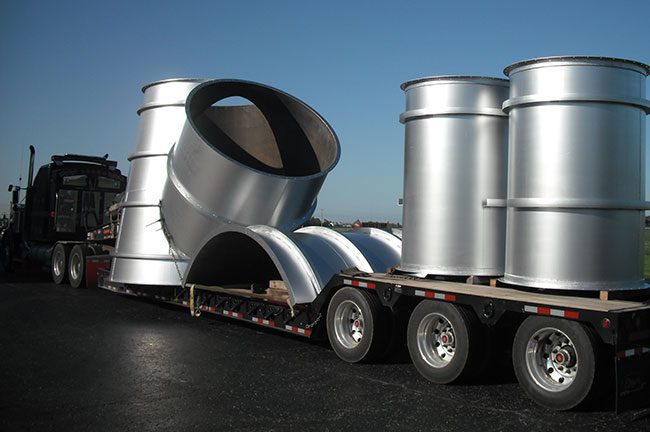How to Spot a Bad Weld
 In the world of industrial and commercial construction, the end product is usually the only thing that matters. Quality results, attractive appeal, met deadlines, and budget goals are the main priorities. However, one of the underappreciated, usually unseen factors for every build that is absolutely crucial to the quality of the project is good welding. Without exceptional welding, the integrity of an entire project is compromised and left with exposed vulnerabilities that could have devastating consequences.
In the world of industrial and commercial construction, the end product is usually the only thing that matters. Quality results, attractive appeal, met deadlines, and budget goals are the main priorities. However, one of the underappreciated, usually unseen factors for every build that is absolutely crucial to the quality of the project is good welding. Without exceptional welding, the integrity of an entire project is compromised and left with exposed vulnerabilities that could have devastating consequences.
The Problem With a Bad Weld
Welding is the only way to join two or more pieces of metal together to create one single new piece. It is also the most economical and efficient way of joining metal pieces permanently. If a steel silo, metal ductwork, or structural steel beams are not welded together properly, then everything could come crashing to the ground.
One of the main reasons for a bad weld is the scientific process of oxidation. When oxygen is allowed to compromise the heated metal, this can leave the final piece too thin, discolored, brittle and porous, and filled with cracks or inclusions. Any time welded metal shows signs of discoloration, lack of uniformity, spatter, undercut/overlap, or incomplete fusion, the work cannot be trusted.
Fortunately, a bad weld can be easily spotted. If the right steps are taken to double check the work, corrections can be made to restore structural integrity and strength. There are at least 18 different tests that can be executed to test for weld quality and strength. These tests and strength calculations can vary depending on the intended use of the welded pieces, and will be more stringent than those factors encountered in the field.
What Makes a Good Weld, “Good”?
There are three primary steps involved in performing a good weld. Each one is important independently, and in combination with the other three. Skimping on one will compromise the entire process.
- Joint Preparation- It’s extremely important that welders take extreme care in making sure all work materials are free from dust, dirt, grease, or other contaminants. Such elements will cause defects in the weld. This same preparation is necessary for maintaining the welding equipment as well. Clean surfaces are a must for a good weld.
- Choosing the Proper Joint Type- Exceptional welders must also be able to determine which joint type is the proper choice for the weld job. There are numerous types of weld joints that could be used for any job, but not every joint option is appropriate for every application. Edge joints, lap joints, t-joints, butt joints; these are just some of the types that welders have to know how to perform and how each one applies to each application. Choosing the wrong joint type could be a weak weld; a weak weld = a bad weld.
- Executing Quality Checks- As we stated above, there are many checks that could be executed to test for weld quality and strength. Even a simple visual check of the work could prove to be life saving. Assuming a weld is properly completed and ignoring this important step could be cost and time prohibitive, and detrimental to the end results.
Swanton Welding Company only employs the highest quality welders to work on our metal fabrication projects. With decades of hands on field experience, tried and true knowledge, and thorough best work practices, our customers can find assurance knowing that each and every weld is performed with excellence. Request a quote today or contact our office to learn about all of our full-service welding capabilities.

